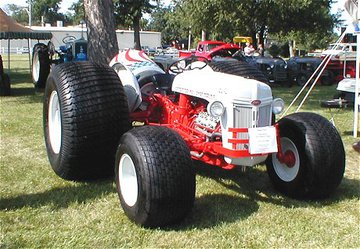Anonymous-0
Well-known Member
Time for new shoes. Majority of my driving is on gravel/asphalt but to get to the poop that has to be moved there is the potential (the norm :roll: ) for mud of a 50-100 meter stretch. Talking an 8N size tractor with 11.2 (thinking of 12.4 or 13.6) x28 tires. I want to fill them to one PSI and forget them (haven't decided to load them or not but probably not).
Is radial tires worth (in my case) the extra 150 bucks each or should I just stick with normal? Also, I have 10" rims, how wide can I go with the same rims?
Thanks, Dave
Is radial tires worth (in my case) the extra 150 bucks each or should I just stick with normal? Also, I have 10" rims, how wide can I go with the same rims?
Thanks, Dave



